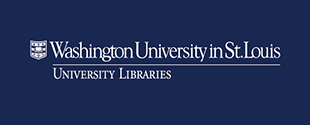[C]ontexts imply other contexts, so that each context implies a global network of contexts.—Arjun Appadurai, Modernity at Large, (1996).
The Gateway Arch commemorates the role of St. Louis as a launching site for the settlement of the American West. For many, the monument no longer evokes Manifest Destiny, but conjures modern architectural ideals and feats of engineering in the 20th century. The 21st century redesign of the Gateway Arch National Park reconnected city to park and drew the indeterminate environment into the design. In this way, the St. Louis riverfront has long been a testing ground for architecture and landscape as representations of our history and aspirations.
While the Gateway Mall also points to Western Expansion, the City Beautiful movement drove the removal of the historic urban core for the construction of the string of parks. Ideas of aesthetic clarity, open space, and civic monumentality lay the groundwork. However, block-by-block, designers and stakeholders have shaped and reshaped the open space over time. The Mall recently has undergone multiple redesigns, and the character seems to be shifting away from openness, toward intensive greening and increased biodiversity. Again, landscapes represent history and aspirations.
If we extend our monumental axis, through Danforth campus, where does the imaginary line go? Would we draw up the Missouri River or a straight section across the continental divide and down to the Pacific Ocean? How many crude oil and natural gas pipelines would we cross? How many coal mines? Is our West-facing axis pointing to the fact that much of St. Louis’s infrastructure lies ‘out West?’
This second year Master of Landscape Architecture studio will trace infrastructural lines—from Downtown St. Louis to the hinterland(1) and back. We will travel to Montana and Wyoming, to understand what connects St. Louis and the American West.
Through drawings we will understand how infrastructure overlaps with ecology and how economy and politics impact landscapes. Beyond westward and upstream, we will look downstream to understand the whole watershed context; we will also look worldwide and try to disentangle a globalized network of resources and environments. Students will tell an informed story about how St. Louis and the American West developed, how US infrastructure is changing, and what St. Louis might stand for in the future.
Landscape architects are... in everything they do, contributing to the political landscapes that all things dwell within.—Rod Barnett, “Designing Indian Country,” (2016)
Finally the studio will return to the Gateway Mall and the Gateway Arch National Park in Downtown St. Louis—the studio site. Students will ground their research through the design of a dialectical landscape—one that fosters the exchange of ideas and invites opposing forces(2). The projects will visualize our history, especially the 20th century infrastructure on which we depend. We will use design to communicate changing priorities in the 21st century.
The landscapes and questions in this studio are monumental, so each student will study one infrastructure and each design project will take one clear position. The studio will employ large maps and valley sections to understand our continental context. Experimental drawings and models will conflate our site with the hinterland and serve as generative tools. Then students will clarify and refine their site designs on or adjacent to the Gateway Mall and Gateway Arch National Park.
1 Meaning “a region remote from urban areas” (Merriam-Webster online). Etymology: from the German hinter (behind) + land (land).
2 Defined from Merriam-Webster (online). For the term ‘dialectical landscape’ draws on Smithson’s “Frederick Law Olmsted and the Dialectical Landscape,” (1973






